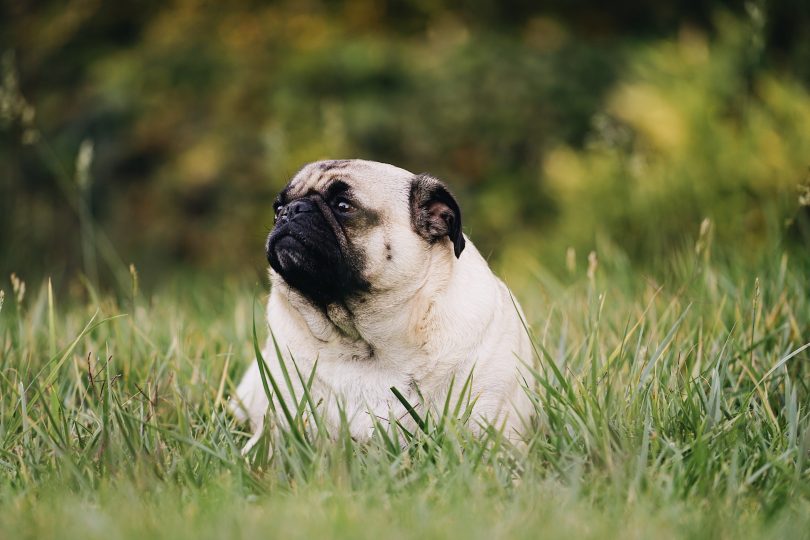56% of dogs are obese, according to The Association for Pet Obesity Prevention’s 2017 annual study. Obesity can shorten a dog’s lifespan and put him at risk of health conditions, including cancer and osteoarthritis. With so many of the nation’s pooches battling the bulge and serious health concerns to consider, it’s important you take yourdog’s nutrition seriously. But do you know how to identify whether your hound is overweight?
Risk factors
Overfeeding is a leading cause in a pet pooch becoming overweight and subsequently obese. One survey revealed that 90% of dog owners are unaware as to how many calories their pet requires a day. Meanwhile, 29% fail to measure out portions before filling up their dog’s bowl. Other risk factors include failing to adjust portion sizes during
periods where exercise is less regular, such as during the winter or following an injury.
Therefore education is key. Take time to learn how much food your hound needs and at different stages of his life. Pet site https://pawster.com advises that ‘virtually all dog food kibbles will provide feeding recommendations.’ As a result, they are a great source of information for owners.
Health implications
An overweight or obese dog will have a poorer quality of life than a pooch who is the ideal weight. This is because overweight dogs often experience a decline in their health and will be diagnosed with conditions such as type 2 diabetes, high blood pressure, heart disease and kidney disease. CBS News reports that heart surgery to treat heart
disease can cost as much as $20,000. Therefore, as a loving owner, save yourself the worry and the expense by cutting back on the dog treats now.
Clinical signs
Your vet will be able to advise whether your dog is heavier than he should be for his breed and age. However, there are telltale signs which should prompt you as an owner to take action. The rib test is a simple at-home test which will indicate whether your dog needs to lose a few pounds. You’ll be able to feel all of the ribs on dog within its
optimum weight range. However, if they’re covered by a layer of fat, then Fido is likely to be overweight and at risk of developing obesity, so swift action is required.
Beating the bulge
As with humans, the perfect way to improve your hound’s waistline is to feed him less and exercise him more. By upping the number of walks or the length of your morning walk, additional calories will be lost. When teamed with a strict, calorie-controlled diet, your dog will soon shift his excess weight, and the risk of obesity will diminish. Another great way to monitor your dog’s weight and overall health is to take him for regular weigh-ins at your local veterinary clinic. Alternatively, you can weigh him at home on your bathroom scales.
A dog who is overweight is at risk of developing obesity. Hounds with obesity will fail to have a good quality of life. Therefore, it’s essential owners take control of their dog’s eating and exercise habits in order to beat the bulge and improve their health.







